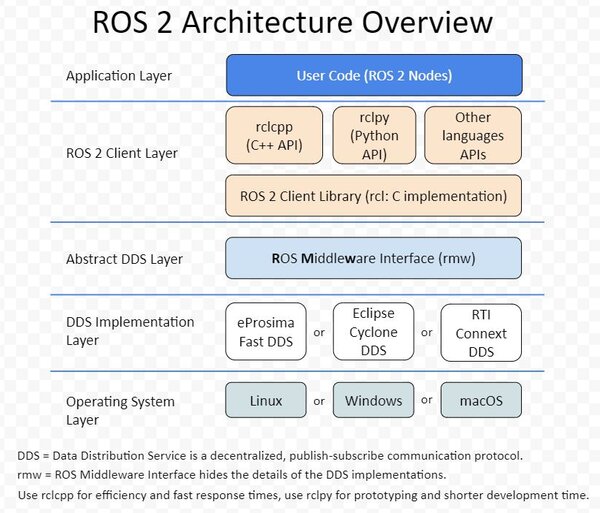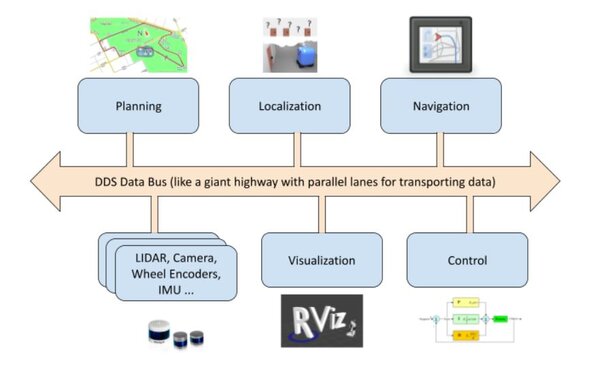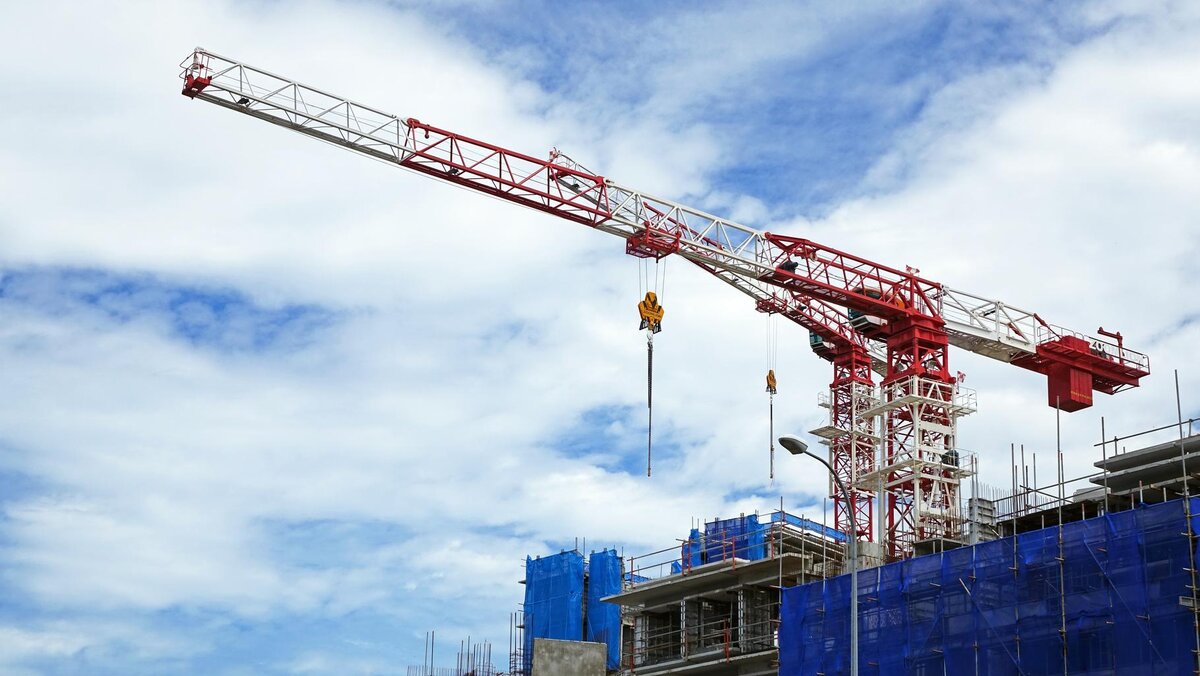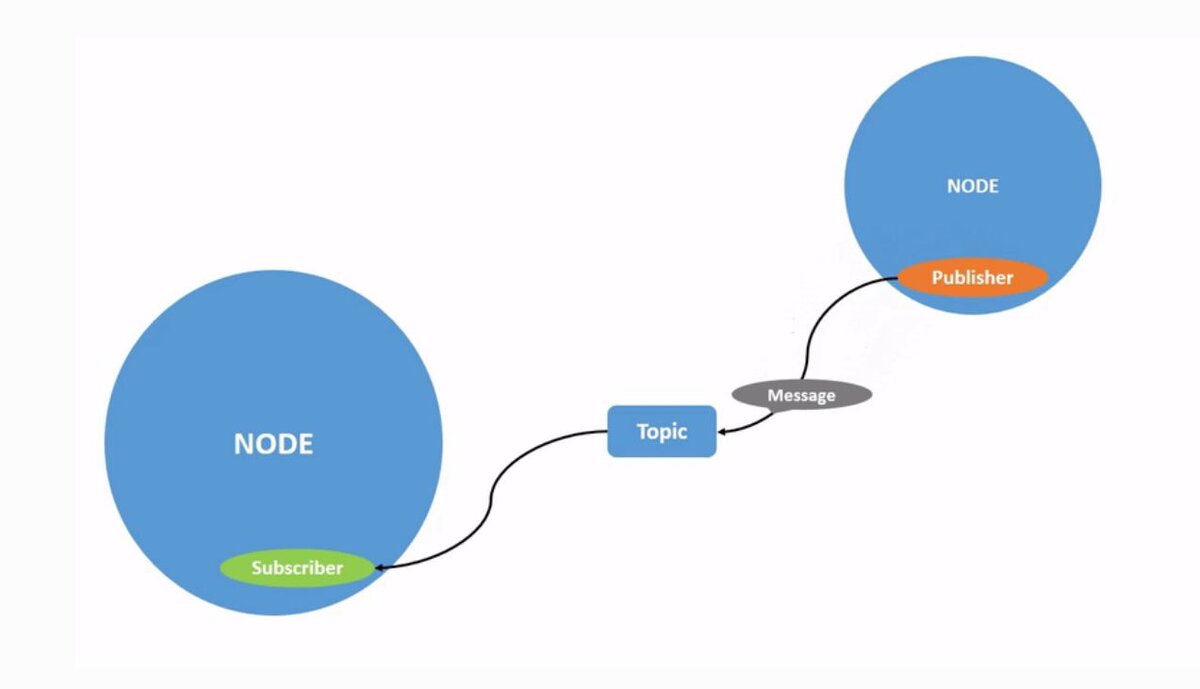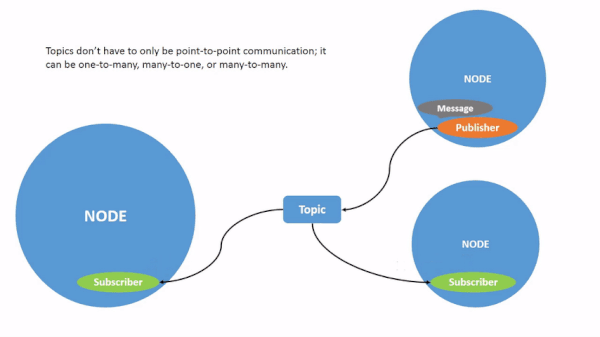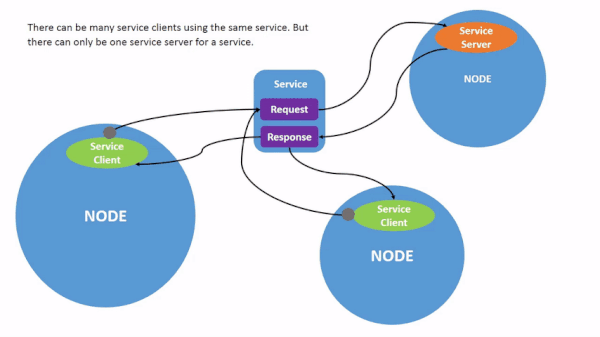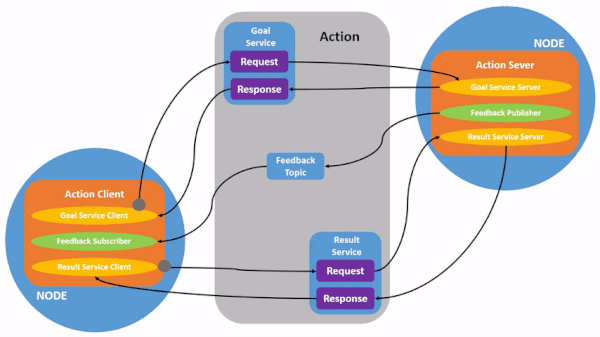In a ROS 2 project, code is organized into packages. A package is just a directory that contains files and folders. Each package might contain a mixture of code (e.g. ROS 2 nodes), data, libraries, images, documentation, etc. Every program you write in ROS 2 will need to be inside a package.
Suppose we have a ROS 2 package named my_robot_package. The file tree below shows a possible structure for a ROS 2 package. This structure is aligned with best practice for a ROS 2 package. I made a few tweaks (e.g. added rviz and maps folders). Note: You do not need to create all these folders in every ROS 2 package.
my_robot_package/
├── README (Describes the package*. Example)
├── CHANGELOG.rst (REP-0132 compliant changelog. Example.)
├── CONTRIBUTING (Describes the contribution guidelines. Example.)
├── LICENSE (A copy of the license or licenses for this package. Usually Apache 2.0. Example.)
├── setup.py (Where to install the Python modules. Python-only packages. Example.)
├── CMakeLists.txt (How to build the code and where to install. Packages with C++ code. Example.)
├── package.xml (Defines the package properties as defined by this convention. Example.)
├── action (Holds custom action definitions. Example.)
├── config (Holds configuration files … i.e. yaml. Example.)
├── doc (Holds all the documentation. Example.)
├── launch (Holds launch files. Example.)
├── maps (Holds map files. Example.)
├── models (Holds SDF model files. Example.)
├── msg (Holds custom message definitions. Example.)
├── rviz (Holds RViz configuration files. Example.)
├── srv (Holds custom service definitions. Example.)
├── test (All system (btw packages), integration (btw code), and/or unit (w/n code) test data. Example.)
├── urdf (Contains URDF files. Example.)
├── worlds (Contains Gazebo world files. Example.)
├── my_robot_package (Holds Python files that can be imported into other Python files. Example.)
│ ├── __init__.py
│ └── python_module_to_import.py
├── scripts (Holds Python code.**. Example.)
│ └── py_node.py
├── include (Holds C++ header files and libraries we want to use inside this package. Example.)
│ └── my_robot_package
│ └── cpp_header.hpp
└── src (Holds C++ source code.***. Example.)
└── cpp_node.cpp
* All packages should have these documentation elements present in their README or linked to from their README:
- Description and purpose
- Definition and description of the public API
- Examples
- How to build and install (should reference external tools/workflows)
- How to build and run tests
- How to build documentation
- How to develop (useful for describing things like python setup.py develop)
- License and copyright statements
** Check this page for best practices on code style and language versions for C++, Python, and README files.
*** Each source file must have a license and copyright statement, checked with an automated linter.
